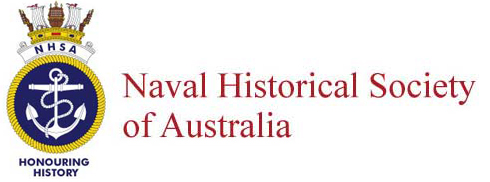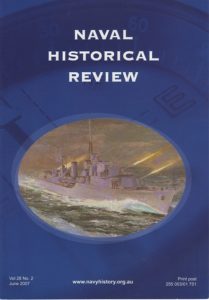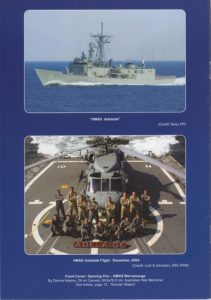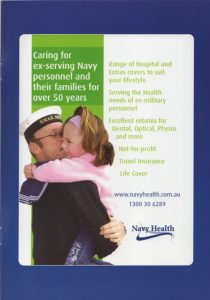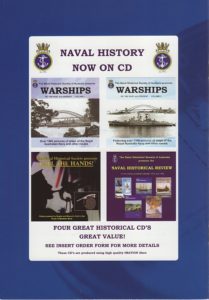- Author
- Jarrett, Hugh
- Subjects
- Biographies and personal histories, History - post WWII
- Tags
-
- RAN Ships
- None noted.
- Publication
- June 2004 edition of the Naval Historical Review (all rights reserved)
It would have been nice to have known this immediately I had rejoined the ship from Malta.
The Captain had also left strict orders that the landing was to take place at precisely 4a.m. the following morning and at a spot on the beach he had marked on the chart. It seemed to me that our Captain and the Officer Commanding the Lancashire Fusiliers had agreed on this and therefore it was probable that I was constrained to an exercise I could not win.
The setting of the exercise was that our landing party was to attempt to ‘blow up’ the NAAFI liquor store about three miles inland and the Fusiliers Support Company was to prevent this. The Captain’s orders for me also stated I was to write the orders for the operation which he would see on his return from Amman.
I was faced with a very busy night to be followed by a very probable no-win situation.
My first break came from the RAF Flight-Lieutenant who was being entertained in the wardroom and who made it clear that he was not charmed by the Fusiliers. So he arranged for two of his airmen to act as ‘spies’ in the Support Company’s canteen. This was aided by the fact that the ship and the RAF were keeping watch on UHF radio and the Fusiliers only had VHF.
It did not take long for our ‘spies’ in the canteen to send a UHF report that the soldiers told them that the plan was for them to let us land and get on our way to the objective, then they would take our boats and sink them simply by pulling out their plugs. With this information, I was able to evolve a plan governed by the philosophy that sailors should not do what the soldiers expected them to do. As they were intending to let us land I would turn this against them.
I had two platoons, each commanded by a Lieutenant. So I mustered them on the quarterdeck at 8 p.m. and briefed them using a large sketch-map. The RAF officer provided men from his detachment as native levies wearing Arab headdresses as guides to each platoon. This was intended to ensure that the sailors would be guided by people with local knowledge.
I could only land one platoon at a time, having only two whalers to be towed by our motor-cutter. So I ordered the first platoon not to land and secure the beach area, but to hit the beach and get off it as fast as possible and press on quickly to the target area. The motor-cutter was to tow the whalers back to the ship to bring the second platoon to land and secure the beach-head. The boats were to be towed off and stand off the beach in safety.
I ordered the first platoon to go up the wadi as fast as possible without taking advantage of cover because I figured that if the soldiers thought that any sailors would get away from the beach area, they would be moving slowly and taking cover.
At 4 a.m. exactly, the first platoon hit the beach and got clear so quickly they passed through the Support Company’s lines while the soldiers were falling in! The soldiers actually filed past the platoon who were lying face down, stock still as the company filed past them! By the time the Support Company arrived at the beach, I had landed with the second platoon and was waiting to do battle.
The sailors enjoyed themselves thoroughly banging off blanks and throwing thunder-flashes at the soldiers, but the simple fact was that this was soldier’s business and a platoon of sailors are no match for a company of trained infantry from one of the best regiments in the British Army. So in due course, I and my second platoon were all rounded up, but our boats were quite safe and lying off out of the Army’s reach.
At dawn I was standing on the beach chatting with the Company Commander, a Major with a DSO, and enjoying coffee and sandwiches provided by the Army, when a 2 inch mortar flare burst overhead and I had the great pleasure of pointing out to the Major that this came from my first platoon who had achieved their objective and now had his company covered. I understand that his Colonel was even more upset!
I do not suggest that sailors are as good as soldiers in land-fighting, but there are many historic instances of landings and operations carried out on shore by sailors.
After the Captain returned from Amman, I presented him with a copy of my Operation Orders, as required, which I wrote after the exercise!
